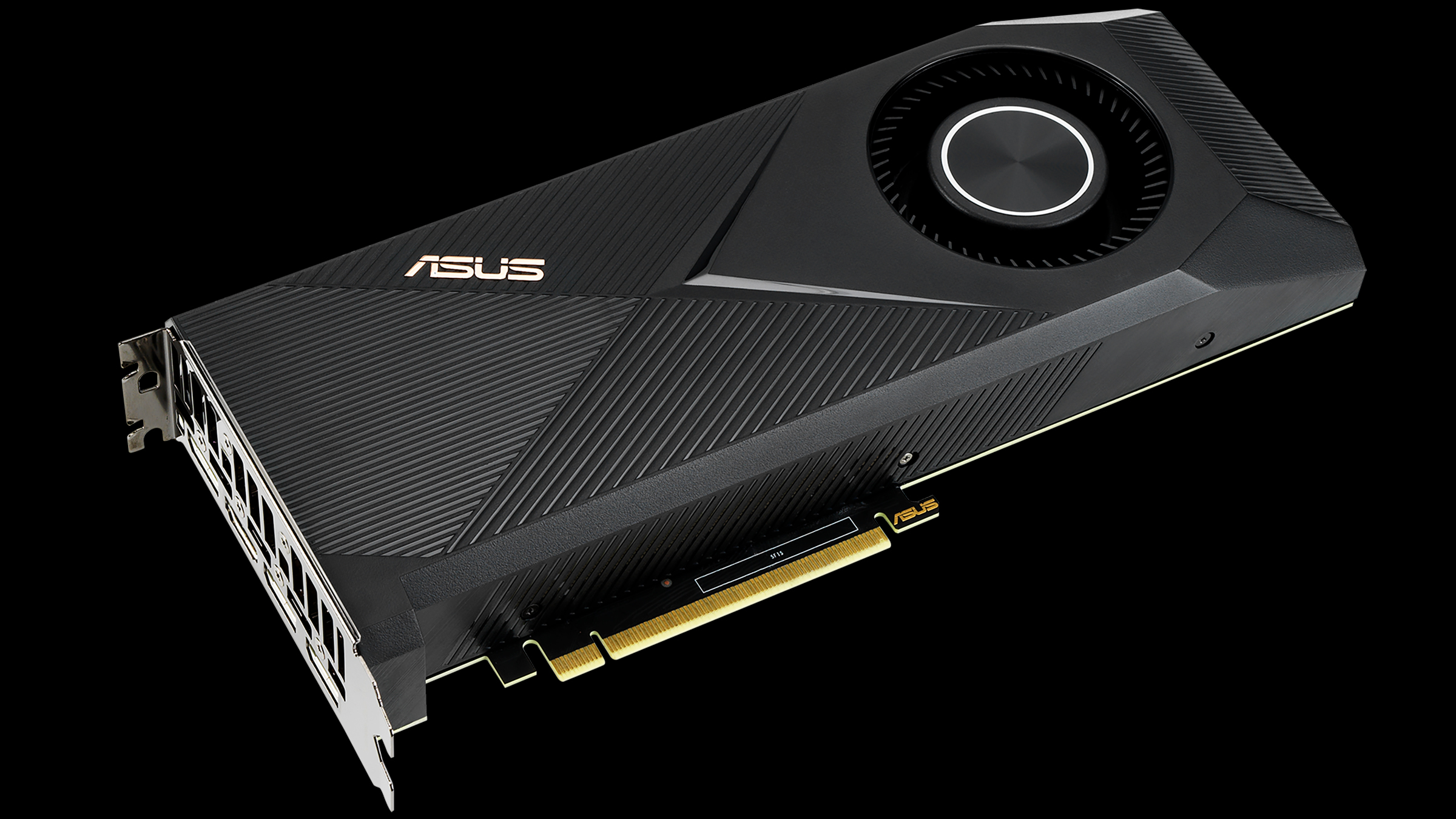Following in the footsteps of the Turbo GeForce RTX 3090, Asus (via Hermitage Akihabara) has given the Nvidia’s GeForce RTX 3070 the same old-school cooling treatment.
Blower-style graphics cards aren’t so common nowadays, but they still have value inside small-form-factor (SFF) hardware circles. In a case with limited airflow, it’s much more beneficial to expel the generated heat from the graphics card rather than dump it back into the case. For this same reason, the Turbo GeForce RTX 3070 from Asus will likely appeal to SFF system builders. though it’s not exactly small.
The Turbo GeForce RTX 3070 (TURBO-RTX3070-8G) maintains the same blower-type shroud as its other Ampere brethen. This iteration, in particular, checks in with dimensions of 26.9 x 11.2 x 4cm and only occupies two PCI slots inside your case. A single 80mm cooling fan blows fresh air into the shroud to cool the graphics card’s interior. The fan itself leverages dual-ball bearings, which are slated to boast double the lifespan in comparison to sleeve bearings.
Image 1 of 3
Image 2 of 3
Image 3 of 3
The Turbo GeForce RTX 3070 features two modes of operation. When Gaming Mode is activated, the graphics card boosts to to reference specification, which is 1,725MHz. OC Mode, on the other hand, helps push the boost clock speed up to 1,755 MHz.
In terms of power connector selection, Asus implemented two 8-pin PCIe power connectors on the Turbo GeForce RTX 3070. Both connectors are conveniently located on the rear side of the graphics card to help with cable management. Asus recommends a power supply with a minimum capacity of 750W for the GeForce RTX 3070.
While the Turbo GeForce RTX 3070 is primarily a gaming graphics card, it can be pretty useful for work as well. The graphics card accommodates up to four monitors, thanks to an HDMI 2.1 port and three DisplayPort 1.4a outputs. HDCP 2.3 support is also present if you need it.
Availability and pricing for the Turbo GeForce RTX 3070 is currently unknown.
